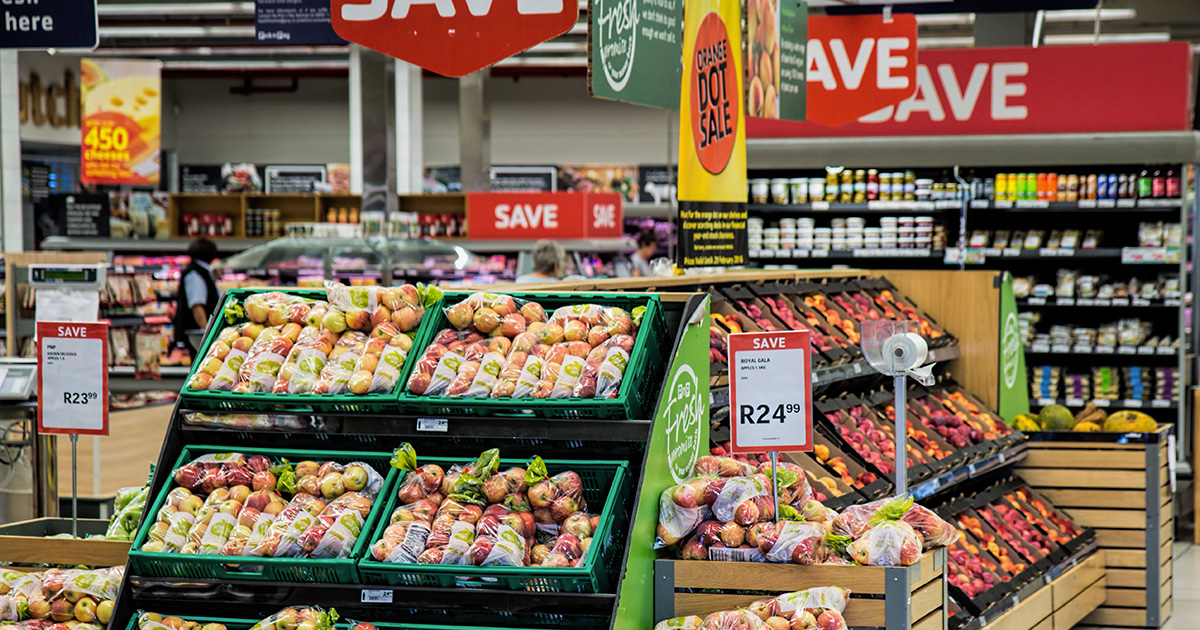It is difficult to engage in a conversation around food these days without diving in to the topic of food waste. The statistics for the U.S. are staggering — $218 billion spent on growing, processing, transporting, and disposing of food that is never eaten; all while 41 million Americans are food insecure. Consumers are waking up to the issue, putting pressure on the businesses they support to commit to actions that reduce waste.
But when it comes to ‘taking action’, if initiatives and programs are piecemeal and one-off, rather than coordinated and linked to corporate goals, a business will likely miss opportunities to create long-term value while reducing waste. We believe a holistic food waste management strategy is the most effective and impactful solution. We explain why below.
Unsold inventory at distribution centers
For many Americans, the relationship with food starts at the grocery store, a restaurant, or a foodservice establishment. Yet for those of us in the industry, we’re well aware that any food product passes through a series of stages before landing in an aisle or on a plate. And at each of these ‘stages’ — from raw ingredients in a field to processing or manufacturing facilities to distribution warehouses to retail or foodservice — there is waste.
Within each node of the supply chain, the causes, types, and volumes of waste differ. At the manufacturing level, there are often organic byproducts from the production process that serve as great feedstocks for animals or organics recycling outlets like anaerobic digestion. In 2016, the Food Waste Reduction Alliance reported that nearly 97 percent of food loss and waste from manufacturers is recycled.
For wholesale distributors (and grocery retailers operating distribution centers), the story is much different — with nearly 30 percent of food waste ending up in the landfill. At these facilities, unsold inventory occurs when uncontrollable factors, like transportation issues, discontinued items, or customer returns, disrupt the sales process and products are left without a market. It is unreasonable to assume that any initiative will completely mitigate this problem and eliminate waste all together. Instead, the focus should be on identifying the highest and best use for unsold product before disposing of it as trash.
Holistic management of unsold food inventory
Before defining ‘highest and best use’, it is helpful to look at food flows in a way that reflects the decision making process of unsold inventory, recognizing that not all unsold product is unsaleable, and that not all unsaleable product or byproduct needs to end up in the landfill. It’s a fundamental shift in perspective, but one that enables companies to see unsold products as an asset rather than a ‘cost of doing business’.

Image from Spoiler Alert.
Corporate priorities, as well as existing shrink and waste reduction initiatives, will play into a company’s protocol for the ‘highest and best use’ for unsold food inventory. Our team recommends adhering as closely as possible to the US EPA’s Food Recovery Hierarchy, which ranks food waste reduction activities based on the benefits created for society, the environment, and the economy. The top two actions are source reduction (preventing waste before it occurs), then redirecting food to feed people. At the very bottom is the landfill — where benefits are null, and decomposing food contributes to climate change.

Image from the US Environmental Protection Agency.
Most food companies currently lack real-time responsiveness to the changing quality of food, the communications support, and/or the standard operating procedures to optimize outlets for unsold inventory and maximize diversion from the landfill. We believe a better understanding of relevant financial and operational data enables greater optimization of potential outlets for unsold products, and ultimately, a reduction in losses. As data and insights are collected, companies can start being proactive and implement actions to drive a reduction in overall shrink over time.
This belief is reinforced in a 2017 report from the Food Marketing Institute, Grocery Manufacturers Association, and Trading Partner Alliance, which highlights ‘data sharing’ and ‘continuous improvement’ as overarching themes that are key to reducing unsaleables (another term for unsold product).
Driving business value
Over the past two years, we’ve written a series of blog posts covering the range of business benefits that stem from taking a holistic approach to managing unsold inventory— from improving operational efficiency to strengthening community engagement. For now, let’s focus on the three, very tangible benefits that are measurable in real dollars and cents.
- Enhanced tax deductions from donating food to qualified nonprofits. Businesses can capture half the gross margin of product as additional deductions, above and beyond the normal cost of goods write-off.
- Lower waste disposal fees from volume reductions, regardless of final destination (e.g., landfill or incineration). New research shows that landfill capacity across the U.S. is shrinking, especially in the northeast U.S.
- Incremental revenue achieved through liquidation markets, selling product at a discount to discount retailers, dollar stores, and/or nonprofits (among others).
These financial strategies impact different sections of a company’s P&L statement, and there are specific factors that will influence the scale of financial contribution (e.g., discounted sale price impacts incremental revenue; volume of donated product affects enhanced tax deductions). Regardless, it is clear that leveraging all these strategies as part of a comprehensive management program for unsold inventory will impact the bottom line.
Where to begin?
Taking a holistic approach to unsold inventory management may sound like a daunting task, but many companies are already engaging in activities — like food donation or composting — that are key pieces of the puzzle. The difference happens when engagement and buy-in starts from the top, and initiatives are positioned as a corporate strategy to facilitate continuous improvement.
When this happens, companies will invest in the tools to facilitate the data capture, communication, and standard operating procedures that will make the holistic strategy effective and drive maximum value for the company.
By: Ricky Ashenfelter
Co-Founder and CEO
Spoiler Alert
May 30, 2018
Spoiler Alert is a Boston-based technology company that helps food businesses manage unsold inventory. At SB’18 Vancouver, the company will be in the ‘Good Food’ pavilion of the Activation Hub.


